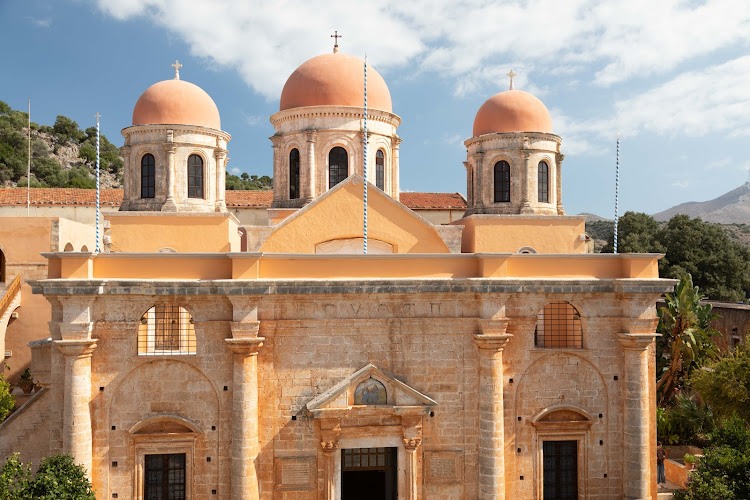
Holy Trinity (Agia Triada) Tzagaroli Monastery
About Holy Trinity (Agia Triada) Tzagaroli Monastery
Description
The Agia Triada Tzagaroli Monastery stands as one of the most remarkable religious landmarks in Crete. Built in the 17th century, this stunning [Greek Orthodox monastery](https://en.wikipedia.org/wiki/Agia_Triada_Monastery) showcases exceptional Venetian baroque architecture that immediately catches your eye. What makes this place truly special is that it's not just a historical relic - it's a living, breathing monastery where monks still produce some of the [finest olive oil and wine](https://www.hydramis-palace.com/chania-guide/agia-triada-tzagaroli-monastery) on the island.Key Features
• The monastery's architecture blends Byzantine and Venetian elements, creating a unique aesthetic that photographers love • An impressive ecclesiastical museum housing rare religious artifacts, icons, and ancient codices • Working wine cellars where visitors can sample locally produced wines • Peaceful courtyard with a central church, perfect for quiet reflection • Active olive oil production facility using traditional methods • [Library containing rare book collections](https://visitcrete.com/info/museums-sites-guide/category/byzantine-ecclesiastical-museums/ecclesiastical-museum-of-agia-triada-tzagkarolon-monastery/) • Beautiful gardens maintained by resident monks • Small shop selling monastery-produced productsBest Time to Visit
Early morning or late afternoon offers the best experience at Agia Triada. The soft light during these hours makes the monastery's honey-colored stone glow beautifully, creating perfect photo opportunities. Spring (April-May) and autumn (September-October) are ideal seasons to visit, when the weather is mild and the gardens are in full bloom. During these months, you'll find fewer tourists and more opportunities to explore the grounds peacefully.How to Get There
The monastery sits on the Akrotiri peninsula, about 15 kilometers from Chania town. You'll find it easily accessible by car, which is the most convenient way to reach it. The road leading to the monastery is well-maintained and marked. If you're relying on public transportation, regular buses run from Chania to Akrotiri peninsula, though you'll need to walk a short distance from the bus stop.Tips for Visiting
Make sure to dress respectfully - shoulders and knees should be covered when entering the monastery. The best time for wine tasting is in the afternoon, and it's worth calling ahead to confirm availability. Don't rush your visit; plan at least 1-2 hours to fully appreciate the architecture, museum, and grounds. The monastery shop offers unique local products like olive oil, wine, and honey - these make excellent souvenirs and help support the monastery's operations. Photography is allowed in most areas, but always ask for permission before taking pictures inside the church. Bring cash, as credit card facilities might not always be available. And yeah, don't forget to check the opening hours before your visit - they can vary by season. The monks here are incredibly knowledgeable about the monastery's history and current operations - if you're lucky enough to chat with one, you'll get fascinating insights into monastery life. During summer months, bring water and sun protection as the courtyard can get quite warm. Oh, and if you're interested in the wine tasting, try to visit during the week when it's typically less crowded.More Details
Find Accommodations Nearby
Recommended Tours & Activities
Visitor Reviews
There are no reviews yet. Be the first one to write one.